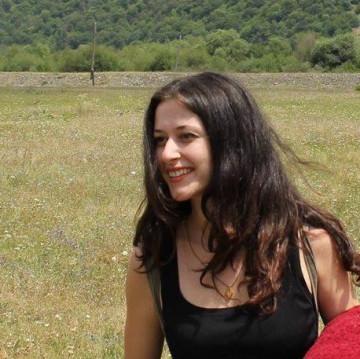
Martvili Monastery
About Martvili Monastery
Martvili Monastery Complex - Early medieval Christian church and monastery complex in Martvili, Samegrelo.
The monastery complex is located near the center of the city of Martvili, in a convenient geographical and strategic location on a high hill. The valleys of the river Tskhenistskali and the river Abasha are widely spread at the foot of the mountain. Almost the whole Imereti and Samegrelo can be seen from the monastery. The monastery is enclosed. The main temple is named after the Assumption of the Virgin. And the Megrelian name Chkondidi originated from "Didi Chkoni" - big oak. In the past, the high hill of Chvenia, on which the monastery stands now, was decorated with millennial trees of "Chkoni" (oak).
The buildings included in the Martvili monastery complex are a fence, rectangular storeroom, main temple, Chikvanebi church, bell tower, chapel.
In the Middle Ages, Martvili was a large cultural and educational center, where many famous scribes worked and many unique manuscripts were kept. The central temple is cross-domed. The facades of the temple are carved. The figures and plant ornament form a whole picture and depict the scenes from the Old Testament and the Gospels. The paintings of the XIV-XVI and XVII centuries are preserved in the temple. Next to the main temple is a two-story church of the X century.
To the west, near the main temple, stands a high pillar on which is the church-room of the pillarist. The last pillarist monk lived here in the early 20th century.
Martvili Monastery was active before the Soviet Union. The Lavra of the Fathers operated here, in the following years compulsory inaction reigned in the monastery, since 1998, with the blessing of the Patriarch of Georgia Ilia II, Martvili again became a monastery complex. A patriarchal residence was built in the vicinity of the church. The Father's monastery of St. Andrew the First-Called, the Nunnery of St. Nino were founded. The life of the nuns and monks was renewed.
In one of the most prominent places of the Martvili Monastery - the royal room, which was a treasure trove in the late Middle Ages, now with the blessing of Reverend Peter, a chapel-museum has been opened, where relics of different times are kept.
History
Martvili - Chkondidi temple, the beauty of Georgian architecture, was built in the 7th century. According to legend, here the pagans sacrificed the infants to their idol - Chkondidi (big oak). The communion table of Martvili is set at the foot of this oak, which was miraculously cut by Andrew the First-Called during the conversion of western Georgia. According to Dubois de Montpéreux, some of the remains of an idol shrine previously standing here are embedded in the walls of the present cathedral. In the VI-VII centuries, when the Church of the Martyrs and a monastery were built here, it was called Martvili. The name of Chkondidi was chosen for the Episcopal Cathedral.
Martvili is a Greek word meaning martyr, and the Megrelian name Chkondidi is derived from "Didi Chkoni" - a large oak. In the past, the high hill of Chvenia, on which the monastery stands now, was decorated with millennial trees of "Chkoni" (oak).
In the 10th century, this church became one of the hubs of the Georgian Church by King George II of Abkhazia, when he declared it as an episcopal see. The temple was a powerful educational center. Bagrat IV appointed Giorgi Mtatsmindeli as the chair of Chkondidi. According to The Georgian Chronicles, Bagrat IV is buried in Martvili Monastery.
In the monastery of Martvili was Crisperia - the abode of the copy typist monks. Books were translated, works were created. In Martvili, different figures worked at different times, Stephen Sananoisdze-Chkondideli - in the 10th century, Giorgi Chkondideli in the 11th century, Johan Chkondideli in the 11th century, Simon Chkondideli in the 12th century, Anton Chkondideli Tamar's contemporary, who translated the book of medicinal use, Arsen Chkondideli in the XIII century, Anton Tsagarel-Chkondideli - Philosopher, Romanos the Pillarist in the 19th century and among them the most distinguished and impressive was George Chkondideli, educator of David the Builder and "companion of all roads". Anton Glonistavisdze, a famous figure of Tamar's time, was also called Chkondideli.
Architecture
The main part of the monastery complex - the Church of the Assumption (21 x 17.5 m) - is built in the middle of a small fenced square. The temple has reached us in a heavily rebuilt form. It was originally a cross-type building. Arab-Turkish invasions severely damaged it. In the 10th century, during the reign of King George II of Abkhazia, the church was thoroughly redesigned: the outer walls were added, the neck of the new dome was built, so it is no longer reminiscent of a cross-type monument from the outside. The western chapel is also from the 10th century. An undamaged faceted shelf, with a deep mark on both sides, is preserved only in the east. The floor is covered with tiles that are radially arranged in the center. The communion table was made in the XVIII century. The small fragment of the mosaic left in the lunette (arch) of the West Gate (the arch) with the image of the Virgin Mary holding the Infant Jesus belongs to the era of the construction of the monument. In the upper part of the western building, there is a large relief image with an old Georgian inscription (X century).
The temple has been painted many times. Only a few of the frescoes of the original VII century are preserved. The frescoes of the XVI-XVII centuries, on which the Chkondideli figures are depicted, are relatively better preserved.
To the south-west of the main temple there is a pillar built in the X-XI centuries, at the bottom there was an exit, and at the top - cell and the church. In the XI century, Johan the Pillarist worked here, in the XIX century - the Pillarists, Romanos and Jesse. Romanos has spent 35 years on the pillar. At the time of Dubois, there was a staircase, which made it possible to reach the pillar.
To the north of the cathedral, on the fence, stands a miniature cross-domed church built of hewn stones, called "Chikvanebi". It was built in the X century, rebuilt in the late feudal era. The church is three-storied. On the first floor, there is an exit, which at the same time is a chapel, on the second floor there is a domed church. Ekvtime Takaishvili wrote: "The beauty of this church is fascinating and going to Martvili is worth just to see it."
In the second half of the XIX century, the Fathers' Monastery was opened in Martvili, which existed until the 1920s. In the second half of the XIX century, an episcopal palace was built to the west of the main church during the reign of Bishop Gregory (Dadiani).
Offers nearby
Map

Tours In Samegrelo
A place with a wonderful history distinguished by tranquility and beauty














Please login to ask a question
Ask a Question